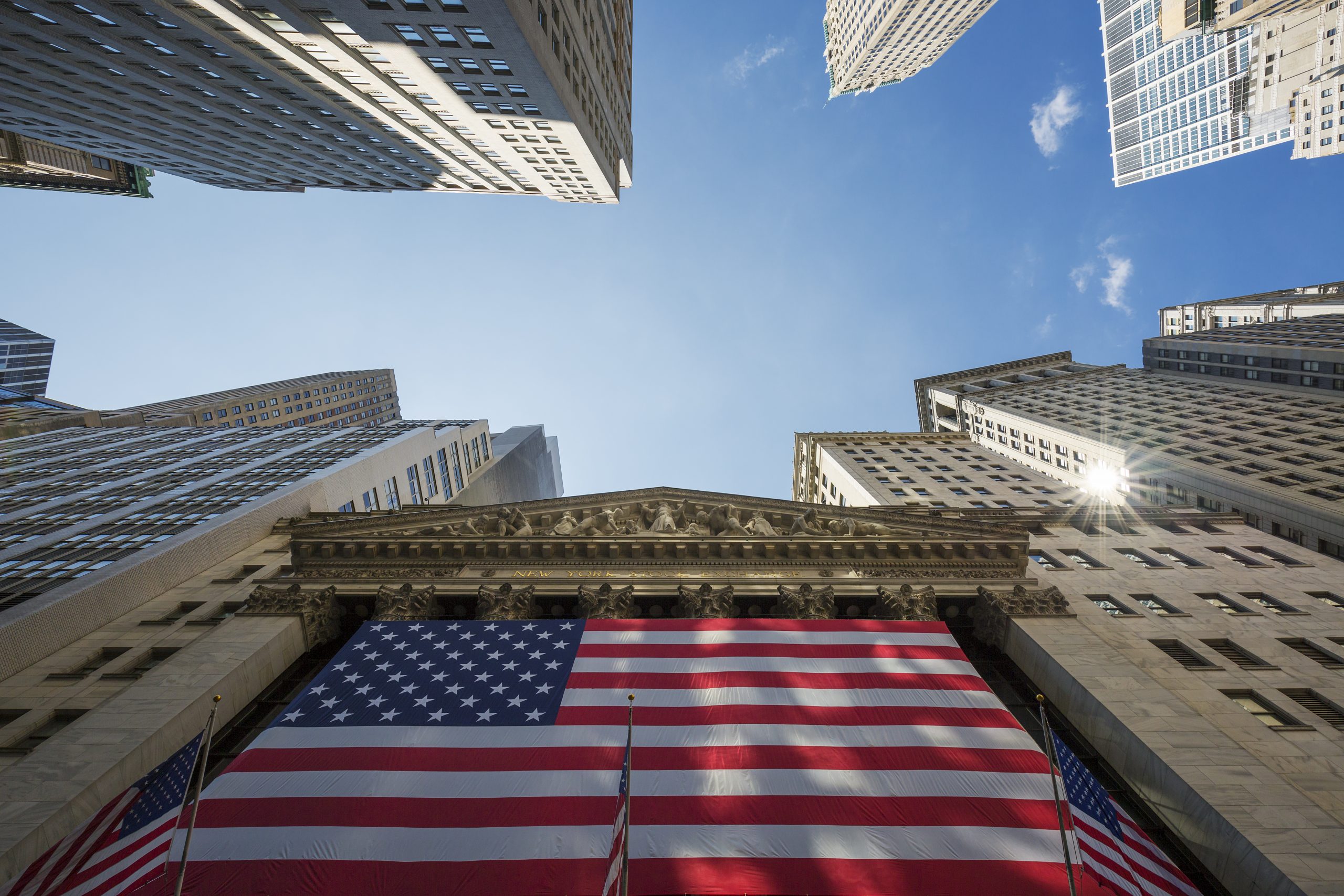The Federal Reserve System (FRS) is the central bank of the United States, often termed the Fed. The financial rates determined or changed by the Fed will indirectly affect your bank's savings or loan interest rates. Yes, you heard it right! The Federal Reserve System is considered to be one of the most robust and powerful financial institutions worldwide. If you are an active news follower, then you must be aware of the fluctuations in the mortgage or saving rates due to the Federal Reserve. This blog will guide you through Federal Reserve responsibilities for your better understanding.
FRS was founded to offer the USA a stable, safe, and flexible monetary and financial system that citizens can rely on. However, the Fed has a board of 7 members, and 12 federal banks with their presidents that represent separate districts.
Sounds confusing? Don’t worry we will walk you through the vital aspects of FRS and help you find the right answers to your specific concerns like what is the Federal Reserve? What is the purpose of the Federal Reserve? Why does the Fed pay interest to banks?
- What is the Federal Reserve?
- Special considerations of Federal reserve responsibilities
- What does the Federal Reserve do?
- How can Federal Reserve rates impact your financial status?
- Understanding FedNow
- Fed’s Bank Term Funding Program
- Ins and Outs of Federal Rates
- Why does the Federal target range have control over Federal rates?
- What happens when the Fed's rates are raised?
- What is the Purpose of the Federal Reserve?
- Fed Reserve and Inflation
- Bottom Line
- Frequently Asked Questions
What is the Federal Reserve?
The Federal Reserve System termed as Federal Reserve or the Fed is considered as the central bank of the USA. One of the main and crucial Federal Reserve's responsibilities includes maintaining the country’s economy stable and controlling the money supply within the country. With the term System, it is important to understand that Federal Reserve System is not the sole central bank of the USA, unlike many other countries, instead FRS consists of 3 major entities:
- The Federal Board of Governors
- The Federal Open Market Committee
- 12 Federal Reserve Banks
Still confused, what is the Federal Reserve? Let’s have a closer look at the working system of the Fed. As we mentioned above, the Fed has 12 special Reserve Banks in specific geographical areas of the USA. We will be exploring the places wherein these banks are situated. Later in the blog.
The Fed has major authority and power to make sure the country has financial stability, and it is the primary regulator for those who are members of the Federal Reserve System. Additionally, FRS is the lender of last resort for the members of financial institutions that have no other place or source to borrow funds.
If you are wondering - where can I find 12 Reserve Banks? The banks are based in. Boston, New York, Cleveland, Philadelphia, Atlanta, Richmond, St. Louis, Minneapolis, Kansas City, Chicago, Dallas, and San Francisco.
Key Considerations of Federal Reserve Responsibilities
- The Fed’s main responsibility is to conduct national monetary policy, supervise and regulate varied banks, and provide banking services while maintaining financial stability within the country
- The Federal Open Market Committee is the body or team created for making policy-based decisions and to manage the country's money supply.
- Whether it is financial institutions or banking customers, the Fed's responsibility is to provide a stable, flexible, and safe financial system in the USA.
- The Federal Reserve has 12 specific banks located in different areas of the USA, responsible for maintaining accurate financial operations.
Special considerations of Federal reserve responsibilities
The Federal Reserve System’s main source of income is through interest rates on a range of government acquired via open market operations. Other sources of income of the Fed occur from interest on foreign currency investment, interest on loans provided to the depository institutions, and fees on services like check clearing and fund transfers offered to financial institutions. After making all the payments of its expenses, the Fed would transfer its remaining earnings to the US Treasury.
The Federal Reserve payment system commonly termed as Fed Wires - usually transfers trillion dollars daily between banks across the US transactions for same-day financial settlement. After the financial crisis occurred in 2008, the Fed focused on the financial risk created by the time lag between the payments made earlier in the day and the time when payments are settled are integrated
However, large financial institutions are pressured by the Fed to improve their procedure of tracking real-time payments, and credit risk, which is available only on a day-to-day basis.
What does the Federal Reserve do?
Often individuals have concerns like what does the Federal Reserve do? Or what are the Federal Reserve's responsibilities? Let’s have a deeper look at the 5 prime functions of the Fed.
Management of US Monetary Policy
This function refers to the actions that relate to the achievement of macroeconomic goals like full employment and stable finances in the country.
Supervising and regulating Financial institutions
One of the important roles of the Fed is to monitor financial institutions with money supply and other factors to ensure it meets certain regulations. Financial institutions like National and a few state banks.
Stabilize the financial system
This function enables businesses and financial institutions to borrow money even at the time of market volatility.
Advocating citizens and institutions about customer protection
This aids in protecting customers’ deposits and saving money at the banks even when the bank fails or meets with bankruptcy to maintain the trust of customers in the financial system. However, the protection has a few rules and regulations.
Offering services to banks
The Fed provides a few services to the banks to maintain the flow of bank operations. The services include - payments and a system of fund settlement.
How can Federal Reserve rates impact your financial status?
While many of the policies outlined by the Federal Reserve System and actions can impact the economy on a large scale. For instance, through controlling the money supply and offering seamless transfers between varied banks. However, whenever the Fed changes the federal fund rates that’s when the entire situation turns round the table.
With the changed fed fund rates, banking customers can feel a more tangible effect. Additionally, the interest rates with loans and savings accounts will move upwards or downwards significantly.
Understanding FedNow
Have you ever heard of FedNow? It is an instant payment service system launched in July 2023. All banks and credit unions can seamlessly utilize this service, but it is not mandated. However, consumers must be at a bank or credit union that participates to benefit from the service of sending and receiving money within seconds - 24/7.
Fed’s Bank Term Funding Program
After the continuous failure of 2 banks in mid-March 2023, FRS introduced a new program dedicated to preventing sudden financial crises with financial institutions.
The Bank Term Funding Program focused on offering loans to banks and credit unions with a tenure of 1 year among others that pledge to US Treasuries and other assets as collateral against the loan. These loans serve as a powerful source of cash for banks that don't need to sell off their investments as quickly as the Silicon Valley Bank to accommodate deposit customers.
If you are affected by the collapse of a third bank in 2023 - First Republic Bank this program is something planned to offer you a secure and safe process to grow your wealth at financial institutions with financial protection to banking customers.
Ins and Outs of Federal Rates
We are sure, you must have gotten an idea about how FRS works, but do you know what Federal rates are? Don’t worry, we’ve got you covered. The Federal Reserve System controls one rate, or the target range of a rate is termed the Federal Reserve Rate.
These rates are the interest rates used by banks while borrowing from other institutions to meet short-term business requirements like enough cash reserves to manage market conditions.
To keep the economy stable, Fed would typically raise the Fed rates to get through the inflation or lower the rates to stimulate the economy. On the other hand, banks are more likely to change their rates with customer loans and saving accounts in the direction of Federal rates.
Who decides the official federal rates?
The Federal Open Market Committee is responsible for raising or lowering or even keeping it unchanged which is discussed during the meeting conducted among the committee members. However, there are in total 8 meetings conducted across the year, and in each meeting members of FOMC discuss their stance on current and future economic circumstances, to provide a rationale for a rate change.
Current Federal Rates
If you are wondering about the current Fed rates, we are listing below recent rates outlined by FOMC members.
| FOMC meeting dates | Changed rates | Federal rates (target range) |
| 25-26 July 2023 | Increased 25 based points ( 0.25 percentage point) | 5.25% -5.50% |
| 13-14 June 2023. | - | 5.00% - 5.25% |
| 2-3 May 2023 | Increased 25 based points ( 0.25 percentage point) | 5.00% - 5.25% |
| 21-22 March 2023 | Increased 25 based points ( 0.25 percentage point) | 4.75% - 5.00% |
| 31 Jan - 1 Feb 2023 | Increased 25 based points ( 0.25 percentage point) | 4.50% - 4.75% |
Why does the Federal target range have control over Federal rates?
The Federal Reserve does not participate in the actual lending and borrowing actions between banks, which leaves the borrowing rates up to any 2 banks that are ready to borrow and negotiate.
The Federal reserve's responsibilities include to motivate to borrow money within a specified target range. It changes 3 rates that will impact how a bank can earn from interest with the FRS, and how much it will cost the bank to borrow money from the FRS.
Remember, raising the 3 rates, will lead to increased Fed rates, Which will make borrowing more expensive which indicates a slowdown in the economy. On the contrary, lowering the 3 rates does the opposite, which means borrowing will become more affordable for banks.
What happens when the Fed's rates are raised?
Impact on borrowers
Banks raise interest rates on new loans and a few existing loans which have variable rates like credit cards, credit and small business loans, and more. A Federal Reserve System rate change will influence a bank’s prime rate - a minimum interest rate decided by individual banks for oan for high creditworthy bank customers.
Impact on savers
Banks can lift their rates with regular savings accounts and even on certificates of deposits (CDs). While, increased rates can attract more savers, which allows banks to utilize deposits to fund customers for their loans.
What is the Purpose of the Federal Reserve?
Congress established the FRS through the 1913 law. Often many US citizens have concerns like what is the purpose of the Federal Reserve? It was introduced to introduce enhanced financial stability in the American financial system. During that tenure, the US was suffering from a serious financial crisis that peaked in the panic of 1907. Today, Congress looks after the FRS through audits, and testimony but the decisions made by the Fed are all independent. The Fed is divided between three bodies
Reserve Banks
Reserve banks serve as a regulator for varied financial institutions, and operators for US payments for Automated Clearing House and Wire Transfers. Additionally, the reserve bank also acts as a government bank by maintaining a US Treasury account for proceeding payments and other essential operations.
Board of Governors
The FRS Board of Governors is the centralized authority based in Washington DC which has the Federal Reserve responsibility of looking after the decentralization of 12 Federal Reserve Banks and other goals of the FRS. There are 12 members named as governors, nominated by the US president and then the Senate confirms.
Federal Open Market Committee
FOMC is responsible for setting monetary policy, like changing Fed rates, promoting stable prices and growth in the economy, and more.

Fed Reserve and Inflation
The FOMC aims to achieve an inflation rate of 2% over a long period to keep the economy stable in the country. To control inflation, FRS focuses on making changes in federal rates. However, the downside of this factor is, it can complicate the Federal impact through global conditions.
Inflation or when the rate or cost of goods and services increases, it can be an indication of a growing economy, which on the other hand can create hardships for Americans. However, the Fed suggests that individuals and Businesses can manage such circumstances or plan for a better future by making informed decisions by considering smart borrowing, investing, and saving when inflation is stable in the country.
Bottom Line
Federal Reserve was established to maintain financial stability. The central bank looks after varied financial and business operations and acts as the best regulator for financial institutions to avoid selling off their investments Additionally, customers gain benefits from their savings accounts with increased Fed rates.
Frequently Asked Questions
The Federal Reserve (the Fed) determines interest rates through control over the federal rate, which affects the interest rates that banks lend to each other to meet their financial requirements. The Fed utilizes the open market operation, for buying or selling government securities, and to manage the supply of money in the banking system, which at the end affects the federal funds rate.
No, the Federal Reserve does not collect taxes in the USA. Tax collection in the US is the responsibility of the. The Internal Revenue Service (IRS), Though, the Federal Reserve's main responsibility and role is to manage monetary policy and look after the country's banking system.







